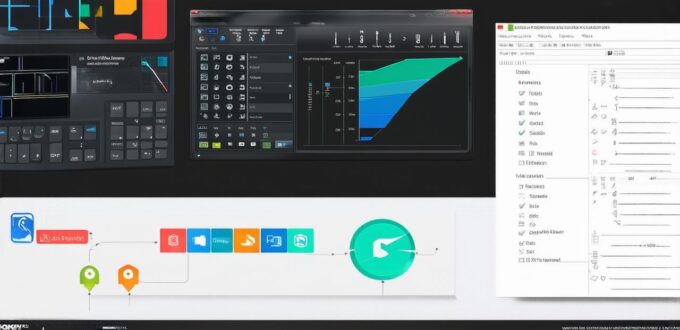1. Operating Systems
An operating system (OS) is a collection of software that manages computer hardware resources and provides common services for computer programs. It acts as an intermediary between the hardware and the software running on it, allowing them to communicate with each other efficiently. Examples of modern operating systems include Windows, macOS, and Linux.
1. Productivity Software
Productivity software is designed to help individuals or teams work more effectively and efficiently. This type of software includes word processors, spreadsheets, presentation software, email clients, and project management tools. Examples of productivity software include Microsoft Office, Google Suite, and Trello.
1. Business Software
Business software is designed to help organizations manage their operations and achieve their goals. This type of software includes customer relationship management (CRM) systems, enterprise resource planning (ERP) systems, human resource management (HRM) systems, and financial management systems. Examples of business software include Salesforce, QuickBooks, and SAP.

1. Mobile Software
Mobile software is designed to run on mobile devices such as smartphones and tablets. This type of software includes mobile apps that allow users to access the internet, social media, and other services from their mobile devices. Examples of mobile software include WhatsApp, Instagram, and Uber.
1. Game Software
Game software is designed for entertainment purposes, allowing users to play games on their computers or mobile devices. This type of software includes adventure games, action games, strategy games, and simulation games. Examples of game software include Minecraft, Fortnite, and Angry Birds.
1. Educational Software
Educational software is designed to help students learn and acquire new skills. This type of software includes educational games, interactive simulations, and online courses. Examples of educational software include Khan Academy, Coursera, and Quizlet.
1. Comparing the Different Types of Software
While each type of software has its unique features and benefits, they all serve a specific purpose. Understanding which type of software best suits your needs can be challenging, but it is essential to ensure that you are using the right tools to achieve your goals.
1. Case Studies: Real-Life Examples of Software in Action
1. Operating Systems
Microsoft Windows is the most widely used operating system in the world, with millions of computers running on it. It provides a user-friendly interface and a range of features that make it easy to work with. For example, Windows has built-in media players, file sharing tools, and security features that help protect your computer from threats.
1. Productivity Software
Google Suite is an excellent example of productivity software in action. It allows users to collaborate on documents, spreadsheets, and presentations in real-time, making it easy to work with team members remotely. In addition, Google Suite integrates seamlessly with other Google products such as Gmail and Drive, making it a versatile and powerful tool for productivity.
1. Business Software
Salesforce is a popular business software that helps organizations manage their sales and customer service operations. It allows users to track leads, manage customer interactions, and analyze sales data in real-time, helping businesses make informed decisions about their sales strategy. In addition, Salesforce integrates with other business software such as QuickBooks and Zoho, making it a versatile and powerful tool for managing all aspects of your business.
1. Mobile Software
Uber is an excellent example of mobile software in action. It allows users to easily request rides and track their driver’s location in real-time. In addition, Uber integrates with other mobile apps such as Google Maps and Spotify, making it a versatile and powerful tool for getting around and enjoying music on the go.
1. Game Software
Minecraft is an excellent example of game software in action. It allows users to build and explore virtual worlds, create their own games, and compete with other players online. In addition, Minecraft has a large and active community that creates new content and mods regularly, making it an excellent tool for creativity and entertainment.
1. Educational Software
Khan Academy is an excellent example of educational software in action.
